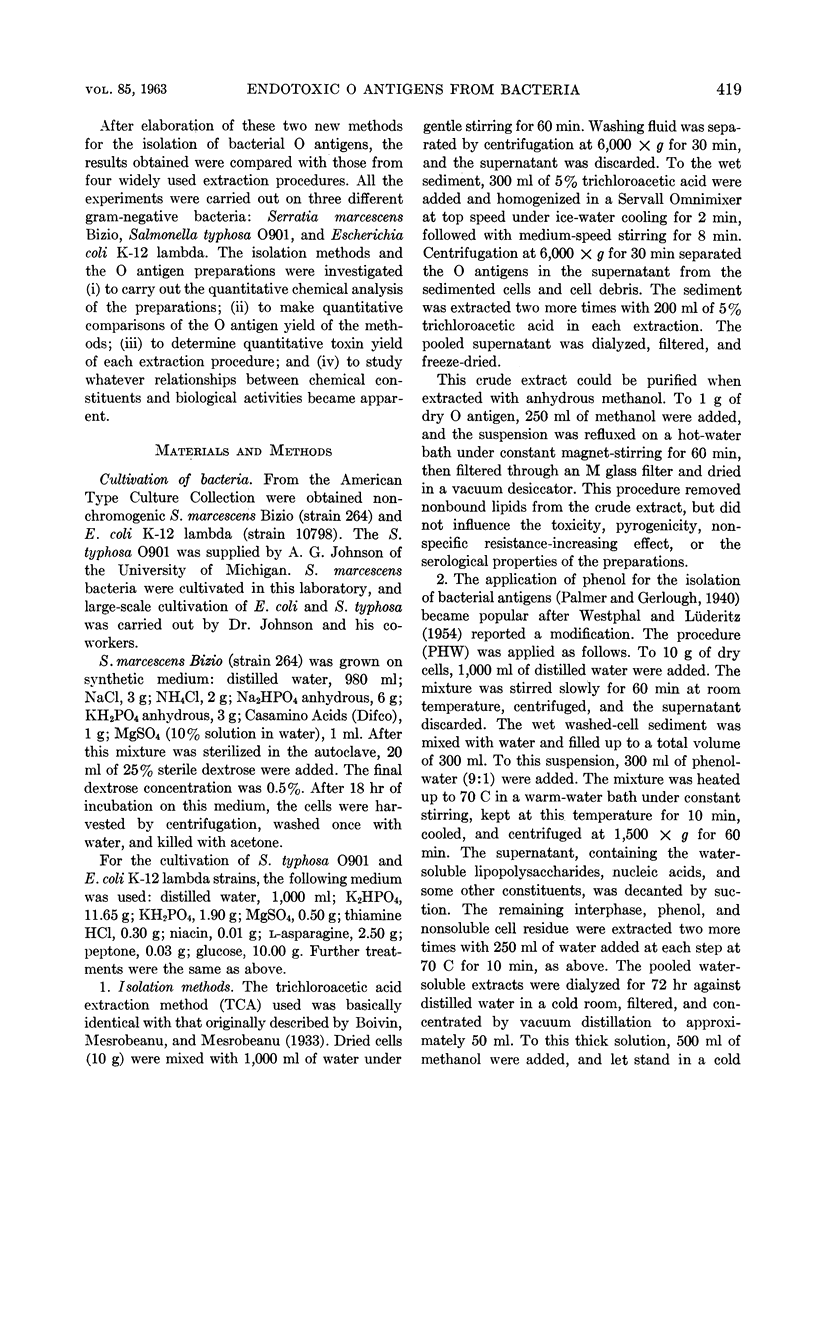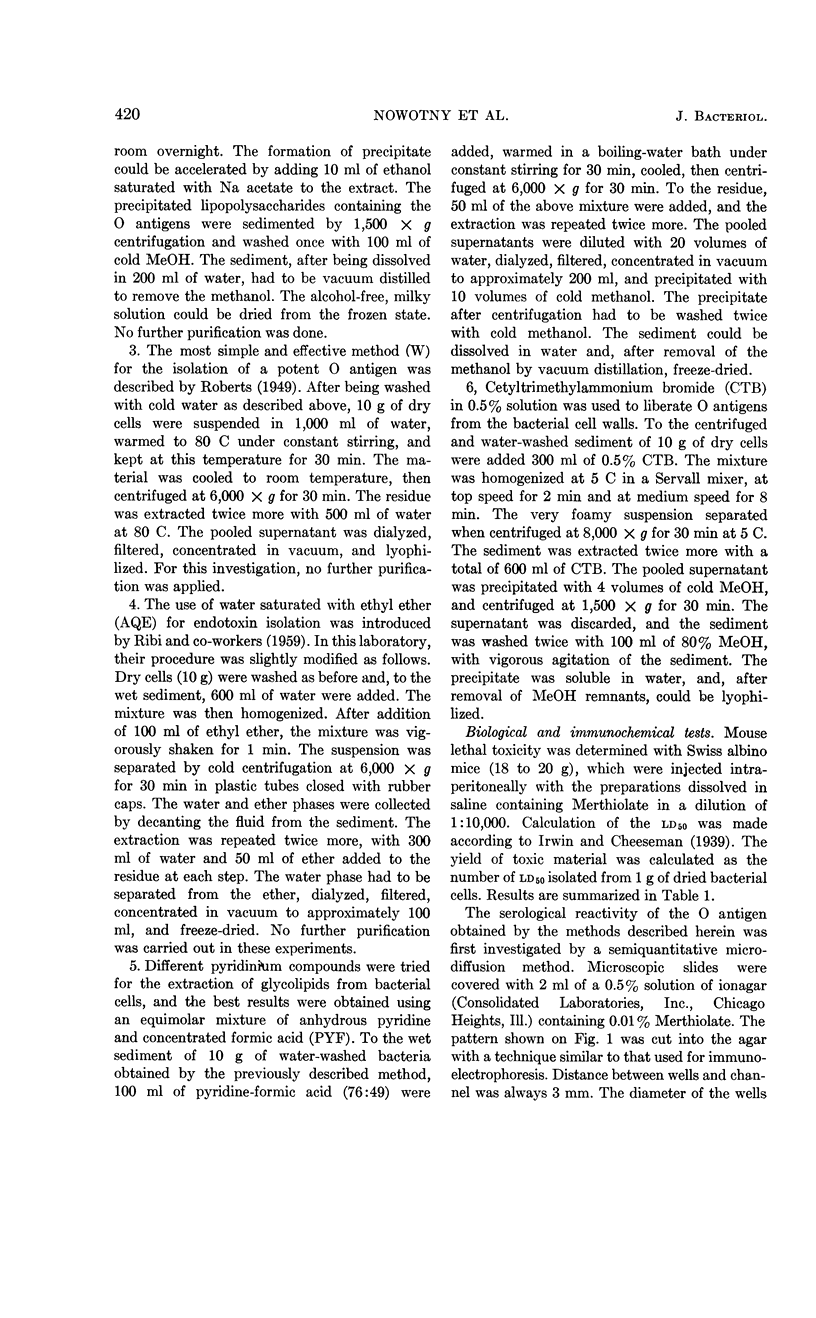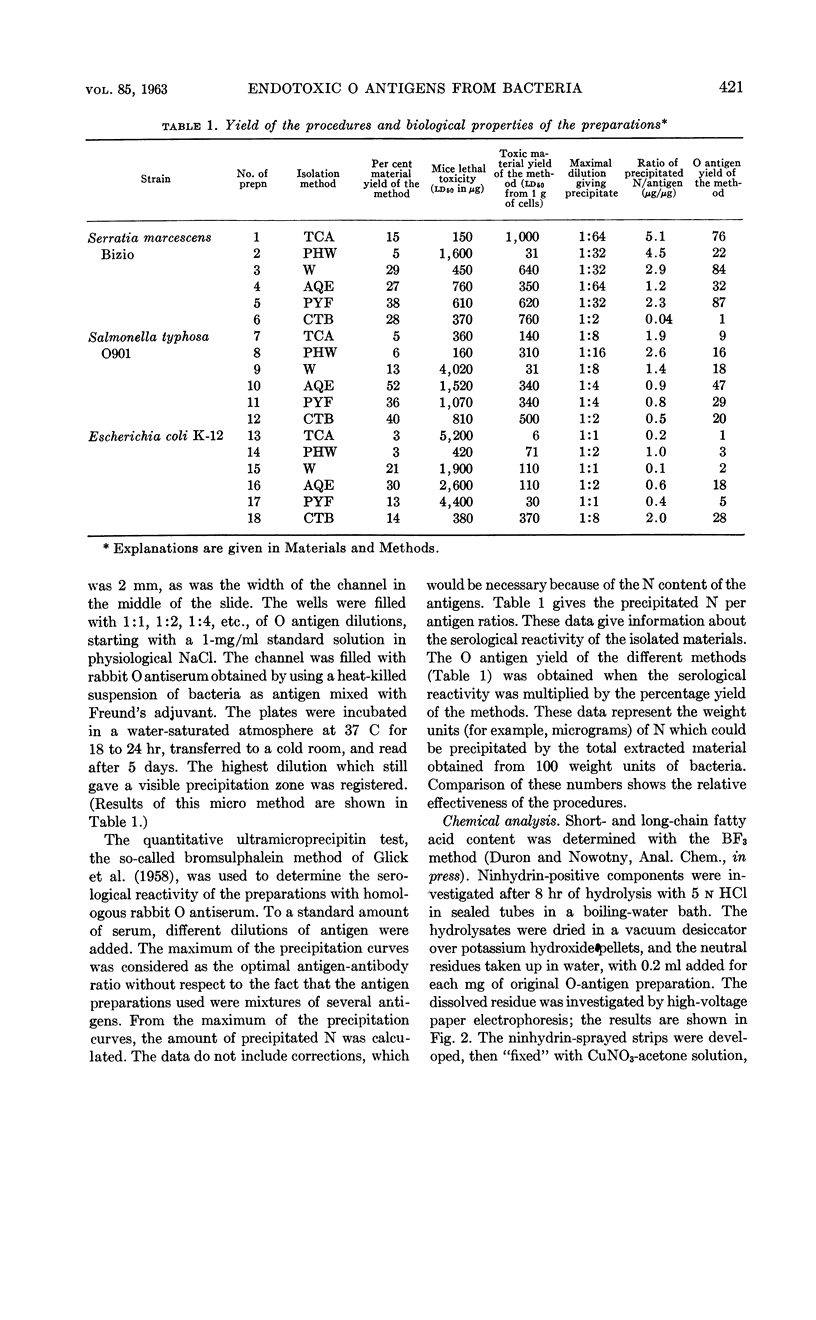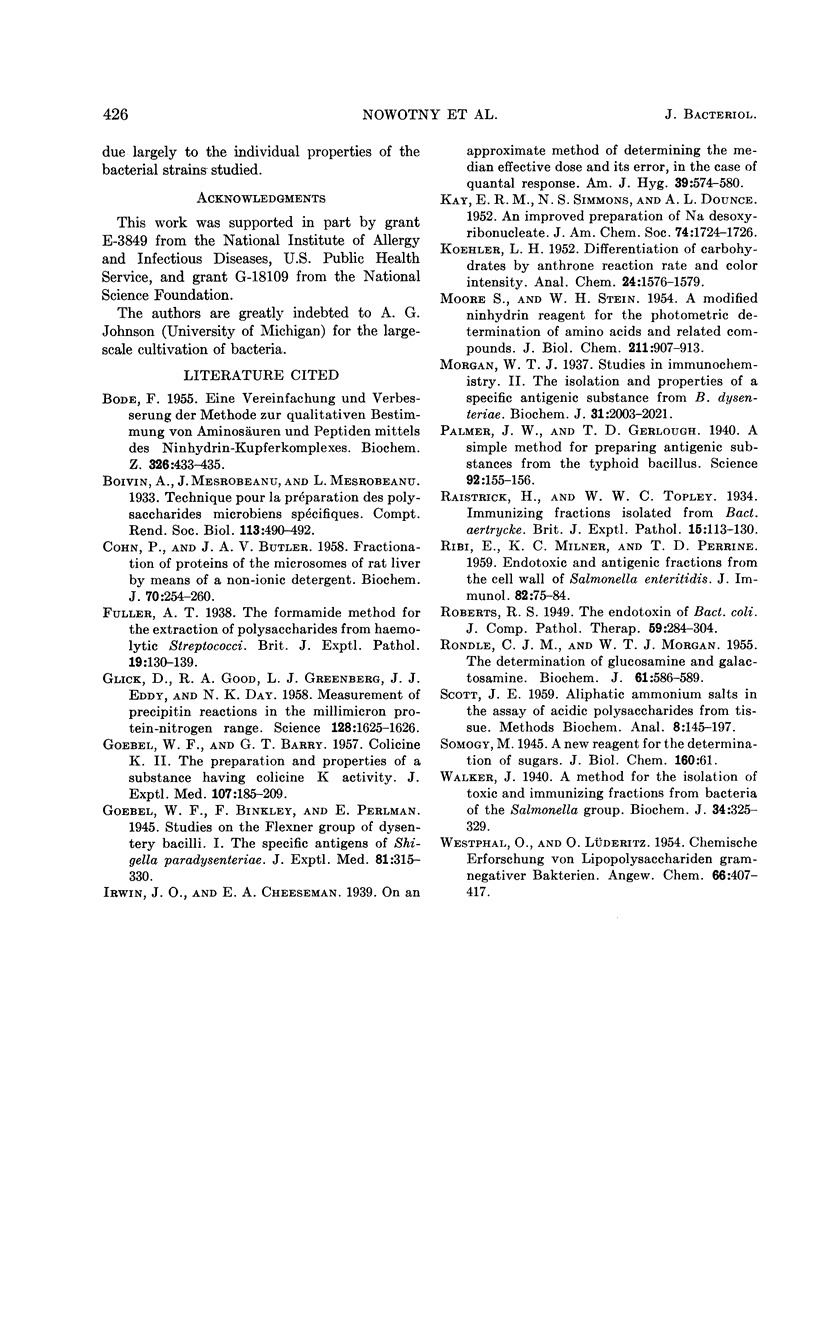Abstract
Nowotny, Anna M. (City of Hope Medical Center, Duarte, Calif.), Scott Thomas, Olga S. Duron, and Alois Nowotny. Relation of structure to function in bacterial O antigens. I. Isolation methods. J. Bacteriol. 85:418–426. 1963.—Six isolation methods, four previously described and two reported herein, were compared for the extraction of endotoxic O antigens from three different enterobacteria: Serratia marcescens Bizio, Salmonella typhosa O901, and Escherichia coli K-12 lambda. Large variations were observed in the toxin yield, in the serologically reactive material yield, and in the nucleic acid-releasing abilities of the six methods when applied to the different bacterial strains. Chemical analyses of the toxic O antigens included quantitative determination of the amino acids, long- and short-chain carboxylic acids, and carbohydrates. Comparisons of the nucleic acid content were also made. Although the chemical composition of the preparations was quite different, no correlation could be found between the percentage of the above components and the lethal toxicity or the serological reactivity. It was concluded that the structural elements or properties responsible for these biological activities cannot be detected by gross chemical analyses.
Full text
PDF








Images in this article
Selected References
These references are in PubMed. This may not be the complete list of references from this article.
- BODE F. Eine Vereinfachung und Verbesserung der Methode zur quantitativen Bestimmung von Aminosäuren und Peptiden mittels des Ninhydrin-Kupferkomplexes. Biochem Z. 1955;326(6):433–435. [PubMed] [Google Scholar]
- COHN P., BUTLER J. A. Fractionation of proteins of the microsomes of rat liver by means of a non-ionic detergent. Biochem J. 1958 Oct;70(2):254–260. doi: 10.1042/bj0700254. [DOI] [PMC free article] [PubMed] [Google Scholar]
- GLICK D., GOOD R. A., GREENBERG L. J., EDDY J. J., DAY N. K. Measurement of precipitin reactions in the millimicrogram protein-nitrogen range. Science. 1958 Dec 26;128(3339):1625–1626. doi: 10.1126/science.128.3339.1625. [DOI] [PubMed] [Google Scholar]
- GOEBEL W. F., BARRY G. T. Colicine K. II. The preparation and properties of a substance having colicine K activity. J Exp Med. 1958 Feb 1;107(2):185–209. doi: 10.1084/jem.107.2.185. [DOI] [PMC free article] [PubMed] [Google Scholar]
- MOORE S., STEIN W. H. A modified ninhydrin reagent for the photometric determination of amino acids and related compounds. J Biol Chem. 1954 Dec;211(2):907–913. [PubMed] [Google Scholar]
- Morgan W. T. Studies in immuno-chemistry: The isolation and properties of a specific antigenic substance from B. dysenteriae (Shiga). Biochem J. 1937 Nov;31(11):2003–2021. doi: 10.1042/bj0312003. [DOI] [PMC free article] [PubMed] [Google Scholar]
- Palmer J. W. A SIMPLE METHOD FOR PREPARING ANTIGENIC SUBSTANCES FROM THE TYPHOID BACILLUS. Science. 1940 Aug 16;92(2381):155–156. doi: 10.1126/science.92.2381.155. [DOI] [PubMed] [Google Scholar]
- RIBI E., MILNER K. C., PERRINE T. D. Endotoxic and antigenic fractions from the cell wall of Salmonella enteritidis; methods for separation and some biologic activities. J Immunol. 1959 Jan;82(1):75–84. [PubMed] [Google Scholar]
- RONDLE C. J., MORGAN W. T. The determination of glucosamine and galactosamine. Biochem J. 1955 Dec;61(4):586–589. doi: 10.1042/bj0610586. [DOI] [PMC free article] [PubMed] [Google Scholar]
- SCOTT J. E. Aliphatic ammonium salts in the assay of acidic polysaccharides from tissues. Methods Biochem Anal. 1960;8:145–197. doi: 10.1002/9780470110249.ch4. [DOI] [PubMed] [Google Scholar]
- Walker J. A method for the isolation of toxic and immunizing fractions from bacteria of the Salmonella group. Biochem J. 1940 Mar;34(3):325–329. doi: 10.1042/bj0340325. [DOI] [PMC free article] [PubMed] [Google Scholar]



